Author: AiYing Compliance
Insiders all know that compliance comes in two forms: one for regulators and one that truly works. The former is called 'Compliance Theater', while the latter is genuine risk management with real tools. Sadly, the vast majority of institutions, especially those financial technology companies racing on the wind, are unconsciously performing the former.
'What is the essence of Compliance Theater? It is a stage meticulously constructed to cope with inspections, obtain licenses, and appease investors. On this stage, the correctness of processes outweighs everything else, and the beauty of reports is far more important than the rate of risk identification. The actors (compliance officers) recite lines already written (compliance manuals) and operate gorgeous props (expensive systems), showcasing a scene of harmony and prosperity to the audience (regulatory agencies). As long as the play is performed well, the license is obtained, and financing is secured, everyone is happy.
In this grand play, the most glamorous, expensive, and deceptive prop is those seemingly operational 24/7 systems that have actually long since lost their essence and become mere shells—a 'zombie system'. Especially the KYT (Know Your Transaction) system, which should be the sharpest scout on the anti-money laundering (AML) front line, often succumbs first, becoming a mere budget consumer that provides a false sense of security. It lies quietly on the server, green light blinking, reports generating, everything seems normal—until a real bomb explodes right under its nose.
This is the biggest compliance trap. You think you've purchased the top-tier equipment and built an unbreakable defense line, but in reality, you're just feeding a zombie with money and resources. It won't protect you; it will only lead you to a mysterious death when disaster strikes.
So, the question arises: why do the KYT tools we invest heavily in and procure with considerable manpower sometimes become mere shells? Is it a fatal error in technology selection, a complete breakdown in process management, or an inevitable result of both?
Today, we focus on the 'Compliance Theater' of the fintech and payment industries, especially in the Southeast Asian market, where the regulatory environment is complex and ever-changing, and business growth is rampant. Here, real performances are taking place, and what we need to do is lift the curtain to see the truth backstage.
Act One: Analyzing the Zombie System—How Your KYT Tool 'Died'.
The birth of a 'zombie system' does not happen overnight. It is not due to a shocking vulnerability or a disastrous crash that it suddenly 'dies', but rather it gradually loses the ability to perceive, analyze, and respond in the day-to-day 'normal operations', ultimately leaving only a shell that maintains vital signs. We can dissect this process from both technical and procedural dimensions to see how a fully functional KYT system steps by step heads toward 'death'.
The technical aspect of 'brain death': Single Point Failure and Data Islands
Technology is the brain of the KYT system. When the neurons in the brain disconnect, information input is obstructed, and analysis models become rigid, the system enters a 'brain death' state. It still processes data, but has lost the ability to understand and judge.
Blind Spots of a Single Tool: Seeing the World with One Eye
Over-reliance on a single KYT tool is the primary and most common reason for system failure. This is almost common knowledge in the field, but in the script of 'Compliance Theater', this point is often selectively ignored in pursuit of so-called 'authority' and 'simplified management'.
Why is a single tool fatal? Because no single tool can cover all risks. It's like expecting a sentinel to simultaneously monitor enemies from all directions; there will always be blind spots. Recently, a study released by MetaComp, a licensed digital asset service provider in Singapore, revealed this harsh reality through testing data. The study analyzed over 7000 real transactions and found that relying on one or two KYT tools for screening could lead to up to 25% of high-risk transactions being erroneously cleared. This means that a quarter of the risks are directly ignored. This is no longer a blind spot; it is a black hole.
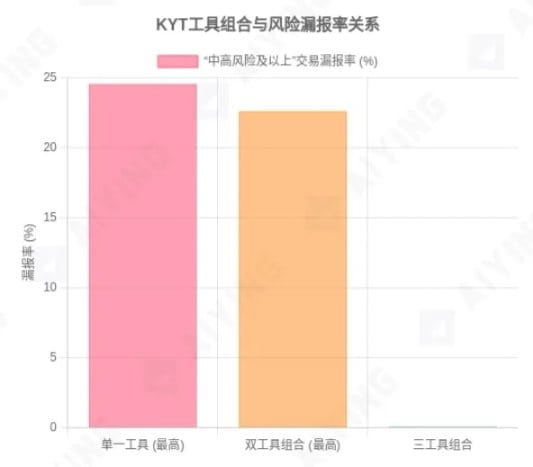
Figure 1: Comparison of 'False Clean Rate' under Different KYT Tool Combinations
Data Source: MetaComp Research - Comparative Analysis of On-Chain KYT for AML & CFT, July 2025. The chart shows that when the risk threshold is set to 'medium-high risk', the false clean rate of a single tool can reach as high as 24.55%, the dual tool combination up to 22.60%, while the three-tool combination drops dramatically to 0.10%.
This enormous risk exposure stems from intrinsic flaws in the KYT tool ecosystem. Each tool is based on its proprietary data sets and intelligence collection strategies, leading to natural differences and blind spots in the following aspects:
Data Source Diversity: Some tools may have close relationships with U.S. law enforcement and provide stronger coverage for risk addresses involving North America; others may delve into the Asian market and provide more timely intelligence on localized fraud networks. No single tool can be the intelligence king for all regions globally.
Different Emphasis on Risk Types: Some tools excel at tracking addresses related to OFAC sanction lists, while others are better at identifying mixing services or darknet markets. If the tool you choose is not adept at identifying the primary risk types your business faces, it is essentially just a decoration.
Update Delays and Intelligence Lag: The lifecycle of black market addresses may be very short. A tool may flag a risk address today, while another tool may take days or even weeks to synchronize. This time difference in intelligence can allow money launderers to complete multiple rounds of operations.
Therefore, when an institution places all its hopes on a single KYT tool, it is essentially gambling—betting that all risks encountered fall within the 'cognitive scope' of that tool.
Data islands cause 'malnutrition': Without a source, how can there be a flow?
If a single tool is narrow in perspective, then data islands represent complete 'malnutrition'. The KYT system has never been an isolated system; its effectiveness is based on a comprehensive understanding of counterparties and transaction behaviors. It needs to continuously gather 'data nutrients' from multiple sources, such as KYC (Know Your Customer) systems, customer risk rating systems, and business systems. When these data channels are blocked or the data quality is poor, KYT becomes like water without a source, losing its basis for judgment.
In many rapidly developing payment companies, this scenario is common:
The KYC team is responsible for customer access, with their data stored in System A; the risk control team monitors transactions with their data in System B; and the compliance team handles AML reports using System C. These three systems belong to different departments and are provided by different vendors, with almost no real-time data interaction between them. As a result, when the KYT system analyzes a real-time transaction, the customer risk rating it relies on may still be static information entered by the KYC team three months ago. This customer may have exhibited various high-risk behaviors in the past three months, but this information is trapped in the risk control team's System B, and the KYT system is unaware of it.
The direct consequence of this 'malnutrition' is that the KYT system cannot establish an accurate baseline of customer behavior. A functional KYT system must be able to identify 'abnormal' transactions—those that deviate from normal customer behavior patterns. If the system does not even know what 'normal' is for a customer, how can it identify 'abnormal'? Ultimately, it can only revert to relying on the most primitive and crude static rules, generating a large number of worthless 'garbage alerts', edging closer to the 'zombie' state.
Static Rules' 'Searching for a Sword in a Boat': Using an Old Map to Find New Land
Criminal methods are evolving rapidly, from traditional 'smurfing' to leveraging DeFi protocols for cross-chain money laundering, and even conducting fake transactions through NFT markets, with complexity and concealment increasing exponentially. However, the rule sets of many 'zombie KYT systems' remain at levels from several years ago, akin to using an old navigation chart to find new lands, destined for nothing.
Static rules, such as 'alert if a single transaction exceeds $10,000', seem trivial to today's black market practitioners. They can easily bypass such simple thresholds by using automated scripts to split a large amount of money into hundreds or thousands of small transactions. The real threat lies in complex behavioral patterns:
A newly registered account engages in a large volume of small, high-frequency transactions with numerous unrelated counterparties in a short time.
Funds rapidly flow in and, without any pause, are immediately dispersed through multiple addresses, forming a typical 'Peel Chain'.
Transaction paths involve high-risk mixing services, unregistered exchanges, or addresses in sanctioned regions.
These complex patterns cannot be effectively described and captured by static rules. What they need is a machine learning model that can understand transaction networks, analyze funding links, and learn risk features from massive data. A healthy KYT system should have dynamic, self-evolving rules and models. The 'zombie system', on the other hand, has lost this capability; once its rule set is established, it seldom updates, ultimately falling far behind in the arms race against black market activities, leading to complete 'brain death'.
Process-level 'heartbeats stopping': from 'one-time solution' to 'alert fatigue'
If technical defects lead to 'brain death', then the collapse of process management directly causes 'heartbeats to stop'. Even the most advanced system, if not driven and responded to by correct processes, is just a pile of expensive code. In 'Compliance Theater', process failures are often more covert and deadly than technical failures.
'Going live equals victory' illusion: Mistaking a wedding for the end of love.
Many companies, especially startups, approach compliance building with a 'project-based' mindset. They believe that procuring and launching the KYT system is a project with a clear start and end. Once the system is successfully launched and passes regulatory acceptance, the project is declared a victory. This is the most typical illusion of 'Compliance Theater'—mistaking a wedding for the end of love, thinking they can rest easy thereafter.
However, the lifecycle of a KYT system begins with its launch. It is not a tool that provides a 'one-time solution' but a 'living entity' that requires continuous care and optimization. This includes:
Ongoing parameter calibration: the market changes, customer behaviors change, and money laundering tactics change. The monitoring thresholds and risk parameters of the KYT system must adjust accordingly. A $10,000 alert threshold that was reasonable a year ago may become meaningless after a tenfold increase in business volume.
Regular rule optimization: With new risks emerging, new monitoring rules must be continuously developed and deployed. Additionally, the effectiveness of old rules should be routinely assessed, eliminating those that only produce false alerts—'garbage rules'.
Necessary Model Re-training: For systems using machine learning models, it is essential to regularly re-train the models with the latest data to ensure their ability to identify new risk patterns and prevent model decay.
When an organization falls into the illusion of 'going live equals victory', these crucial follow-up maintenance tasks are often neglected. No one is responsible, no budget support, and the KYT system becomes like a sports car abandoned in the garage; no matter how good the engine, it will slowly rust and ultimately turn into a pile of scrap metal.
'Alert fatigue' crushes compliance officers: the last straw.
A misconfigured, poorly maintained 'zombie system' leads directly and disastrously to an overwhelming number of false positive alerts. Observations in the industry indicate that in many financial institutions, over 95% or even 99% of alerts generated by the KYT system are ultimately verified as false positives. This is not just a matter of inefficiency; it triggers a deeper crisis—'alert fatigue'.
We can imagine a compliance officer's daily routine:
Every morning, he opens the case management system and sees hundreds of alerts awaiting processing. He opens the first one and after half an hour of investigation, finds it to be a normal business activity of the client and closes it. The second one is the same. The third one, too... Day after day, he is submerged in an endless sea of false alerts. The initial vigilance and seriousness gradually give way to numbness and perfunctoriness. He starts looking for 'shortcuts' to quickly close alerts, and his trust in the system falls to rock bottom. Ultimately, when a genuinely high-risk alert appears amidst the noise, he may just glance at it and habitually mark it as a 'false positive', then close it.
'Alert Fatigue' is the last straw that breaks the compliance frontline. It psychologically destroys the combat effectiveness of compliance teams, turning them from 'hunters' of risks into 'cleaners' of alerts. The entire compliance department's energy is consumed in ineffective battles with a 'zombie system', while real criminals stroll across the frontline under the cover of alert noise.
At this point, a KYT system's processes have completely 'stopped beating'. It still generates alerts, but these 'heartbeats' have lost their meaning; no one responds, and no one believes them. It has completely turned into a zombie.
Previously, a friend's company staged a classic 'Compliance Theater' to obtain a license and please investors: they loudly announced the procurement of the industry's top KYT tools and used this as promotional capital for 'committing to the highest compliance standards'. However, to save costs, they only bought services from one vendor. The management's logic was: 'We used the best, so don't blame me if something happens.' They selectively forgot that any single tool has blind spots.
Moreover, the compliance team is understaffed and lacks technical knowledge, relying only on the most basic static rule templates provided by vendors. Monitoring large transactions and filtering a few public blacklist addresses is seen as completing the task.
The most critical issue is that once business scales up, alerts flood in like snowflakes. Junior analysts quickly find that over 95% are false positives. To meet KPIs, their work shifts from 'investigating risks' to 'closing alerts'. Over time, no one takes alerts seriously anymore.
Professional money laundering gangs quickly catch the scent of rotten meat. They use the simplest yet effective method to turn this 'zombie system' into their ATM: by breaking down funds from illegal gambling into thousands of small transactions below the monitoring threshold, disguising them as e-commerce returns. In the end, it is not their team members who trigger the alert, but their partner bank. When the regulatory investigation letter lands on the CEO's desk, they are still in a daze, and the subsequent consequence is said to be a license revocation.
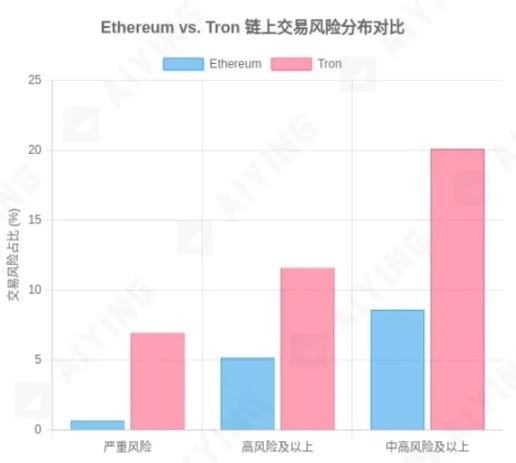
Figure 2: Comparison of Risk Levels Across Different Blockchain Networks
Data Source: MetaComp Research - Comparative Analysis of On-Chain KYT for AML & CFT, July 2025. The chart shows that in sampled data, transactions on the Tron chain were rated as 'severe', 'high', or 'medium-high' risk at significantly higher rates than those on the Ethereum chain.
The stories around us are a mirror, reflecting the shadows of countless fintech companies performing 'Compliance Theater'. They may not have collapsed yet, just because they are lucky enough not to have been targeted by professional criminal gangs. But eventually, it's only a matter of time.
Act Two: From 'Zombie' to 'Sentinel'—How to Awaken Your Compliance System?
After revealing the pathology of the 'zombie system' and witnessing the tragedy of 'Compliance Theater', we cannot merely stay at the level of criticism and lamentation. As frontline practitioners, we are more concerned with: how to break the deadlock? How to awaken a dying 'zombie' and transform it into a truly capable and defensive 'frontline sentinel'?
The answer does not lie in purchasing more expensive or more 'authoritative' single tools but in a complete transformation from concept to tactics. This methodology has long been an unspoken secret among the true practitioners in the industry. MetaComp's research systematically quantifies and publicizes this for the first time, providing us with a clear and executable battle manual.
Core Solution: Say Goodbye to One-Man Shows and Embrace a 'Multi-layer Defense System'
First, it is essential to completely abandon the theatrical mindset of 'buying a tool solves everything' from its root. True compliance is not a one-man show; it is a positional battle that requires building a multi-layer defense system. You cannot expect a single sentinel to block a thousand troops; you need a three-dimensional defense network composed of sentinels, patrols, radar stations, and intelligence centers.
Core Tactic: Multi-tool Combination Punch
The tactical core of this defense system is 'multi-tool combination punch'. The blind spots of a single tool are inevitable, but the blind spots of multiple tools are complementary. Through cross-validation, we can minimize the hiding space of risks.
So, the question arises: how many tools are needed? Two? Four? Or is more always better?
MetaComp's research provides a crucial answer: a combination of three tools is the golden rule for achieving the best balance between effectiveness, cost, and efficiency.
We can understand this 'trio' in simple terms:
The first tool is your 'frontline sentinel': it likely has the broadest coverage and can detect most conventional risks.
The second tool is your 'special patrol team': it may have unique reconnaissance capabilities in a specific area (such as DeFi risks or regional intelligence) to detect hidden threats that the 'sentinel' cannot see.
The third tool is your 'back-end intelligence analyst': it may have the most powerful data association analysis capabilities, able to connect the fragmented clues discovered by the first two and outline a complete risk profile.
When these three operate in concert, their power is far from simply additive. Data shows that upgrading from dual tools to three tools leads to a qualitative leap in compliance effectiveness. MetaComp's report indicates that a well-designed three-tool screening model can reduce the 'False Clean Rate' of high-risk transactions to below 0.10%. This means that 99.9% of known high-risk transactions will be captured. This is what we mean by 'effective compliance'.
In contrast, upgrading from three tools to four may further reduce the false clean rate, but the marginal benefits are minimal, while the costs and time delays are significant. Research shows that screening time for four tools can take up to 11 seconds, while three tools can keep it around 2 seconds. In payment scenarios requiring real-time decisions, this 9-second difference could be a matter of life and death for user experience.
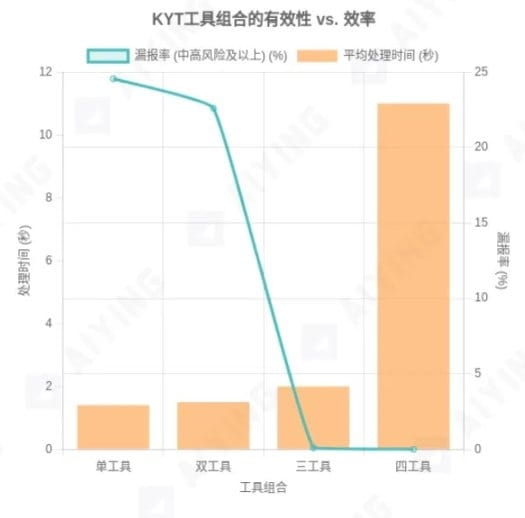
Figure 3: Effectiveness and Efficiency Trade-off of KYT Tool Combinations
Data Source: MetaComp Research - Comparative Analysis of On-Chain KYT for AML & CFT, July 2025. The chart visually demonstrates the impact of increasing the number of tools on reducing 'False Clean Rates' (effectiveness) and increasing 'Processing Times' (efficiency), clearly indicating that a combination of three tools is the most cost-effective choice.
Methodology Implementation: Establish Your Own 'Rules Engine'
Choosing the right 'trio' combination merely completes the equipment upgrade. The more critical issue is how to command this multi-unit force for coordinated operations. You cannot let three tools each speak their own language; you need to establish a unified command center—namely, your own 'rules engine' that is independent of any single tool.
Step One: Standardization of Risk Classification—Speaking the Same Language
You cannot let tools lead you by the nose. Different tools might use different labels like 'Coin Mixer', 'Protocol Privacy', or 'Shield' to describe the same risk. If your compliance officer needs to memorize each tool's 'dialect', it would be a disaster. The right approach is to establish a clear, internally unified risk classification standard and then map the risk labels from all integrated tools to your own standard system.
For example, you can establish the following standardized classifications:
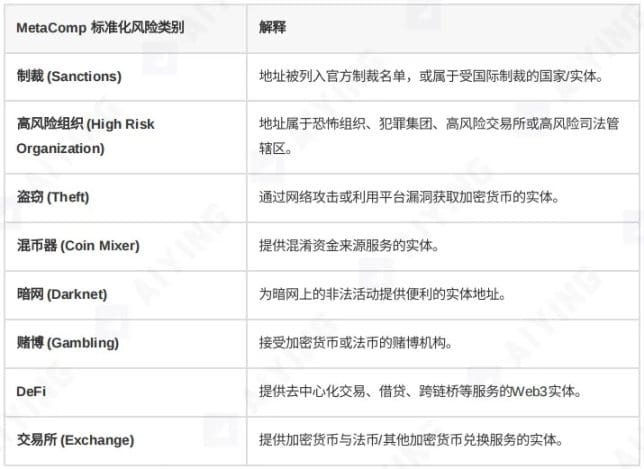
Table 1: Risk Category Mapping Example
In this way, regardless of which new tool is integrated, you can quickly 'translate' it into a unified internal language, enabling cross-platform horizontal comparisons and unified decision-making.
Step Two: Unify Risk Parameters and Thresholds—Clearly Define the Red Lines
With a unified language, the next step is to establish unified 'rules of engagement'. You need to set clear, quantifiable risk thresholds based on your own risk appetite and regulatory requirements. This is a key step in transforming subjective 'risk appetite' into objective, machine-executable instructions.
This set of rules should not just be simple monetary thresholds, but more complex, multidimensional parameter combinations, such as:
Severity Level Definition: Clearly define which risk categories are considered 'severe' (e.g., sanctions, terrorist financing), which are 'high risk' (e.g., theft, darknet), and which are 'acceptable' (e.g., exchanges, DeFi).
Transaction-level contamination threshold (Transaction-Level Taint %): Define the percentage of funds indirectly sourced from high-risk sources in a transaction that triggers an alert. This threshold must be scientifically set through extensive data analysis, rather than arbitrarily decided.
Cumulative risk threshold at the wallet level (Cumulative Taint %): Define the proportion of funds in a wallet's entire transaction history that has transacted with high-risk addresses that necessitates marking it as a high-risk wallet. This can effectively identify those 'old hands' that have long engaged in gray transactions.
These thresholds are the 'red lines' you define for the compliance system. Once touched, the system must respond according to the pre-set script. This makes the entire compliance decision-making process transparent, consistent, and defensible.
Step Three: Design a Multi-layer Screening Workflow—A Three-dimensional Strike from Point to Area
Finally, you need to integrate standardized classifications and unified parameters into an automated multi-layer screening workflow. This process should resemble a precision funnel, filtering step by step to achieve precise strikes against risks while avoiding excessive interference with a large number of low-risk transactions.
An effective workflow should include at least the following steps:
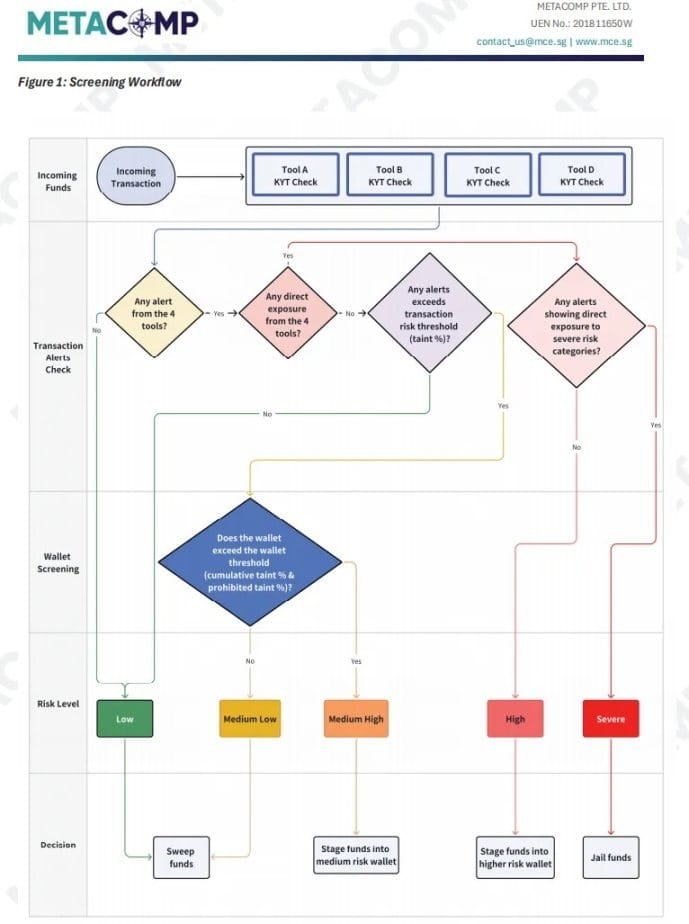
Figure 4: An Example of an Effective Multi-layer Screening Workflow (adapted from MetaComp KYT methodology)
Initial Screening: All transaction hashes and counterparty addresses are first scanned in parallel using the 'three-tool' approach. If any tool raises an alert, the transaction moves to the next stage.
Direct Exposure Assessment: The system assesses whether the alert is for 'direct exposure', meaning the counterparty address itself is a marked 'severe' or 'high-risk' address. If so, this represents the highest priority alert, requiring immediate freezing or manual review processes.
Transaction-Level Exposure Analysis: If there is no direct exposure, the system begins 'fund tracing', analyzing what proportion (Taint %) of the funds in this transaction can be indirectly traced back to risk sources. If this proportion exceeds the preset 'transaction-level threshold', it moves to the next step.
Wallet-Level Exposure Analysis: For cases exceeding transaction-level risk, the system further conducts a 'comprehensive examination' of the counterparty's wallet, analyzing its overall risk status based on historical transactions (Cumulative Taint %). If the wallet's 'health' is also below the preset 'wallet-level threshold', the transaction is ultimately confirmed as high risk.
Final Decision: Based on the final risk rating (severe, high, medium-high, medium-low, low), the system automatically executes or prompts manual action: release, intercept, return, or report.
The cleverness of this process lies in shifting risk identification from a simple 'yes/no' judgment to a three-dimensional evaluation process that moves from points (individual transactions) to lines (funding links) and then to areas (wallet profiling). It effectively distinguishes between 'direct hits' of severe risks and 'indirect contamination' of potential risks, enabling optimized resource allocation—responding fastest to the highest-risk transactions, conducting in-depth analyses of medium-risk transactions, and quickly releasing the vast majority of low-risk transactions, perfectly resolving the conflict between 'alert fatigue' and 'user experience'.
Final Chapter: Dismantle the Stage and Return to the Battlefield
We have spent a long time dissecting the pathology of the 'zombie system', reviewing the tragedy of 'Compliance Theater', and discussing the 'battle manual' to awaken the system. Now, it's time to return to square one.
The greatest danger of 'Compliance Theater' is not how much budget and manpower it consumes, but the lethal, false 'sense of security' it creates. It misleads decision-makers into thinking that risks are under control, while executors become numb in their day-to-day ineffective labor. A silent 'zombie system' is far more dangerous than a non-existent system, as it leads you into danger unprepared.
In today's era of simultaneous iteration of black market technology and financial innovation, relying on a single tool for KYT monitoring is like running naked on a battlefield full of gunfire. Criminals have unprecedented arsenals—automated scripts, cross-chain bridges, privacy coins, DeFi mixing protocols—while your defense system remains at the level of several years ago, making a breach just a matter of time.
Real compliance is never a performance aimed at pleasing the audience or passing inspections. It is a hard battle, a prolonged war that requires sophisticated equipment (multi-layer tool combinations), tight tactics (unified risk methodologies), and excellent soldiers (professional compliance teams). It doesn't need a glamorous stage and hypocritical applause; it needs respect for risks, honesty in data, and continuous refinement of processes.
Therefore, I call on all practitioners in this industry, especially those with resources and decision-making power: please abandon the fantasy of 'silver bullet' solutions. There is no magical tool that can solve all problems once and for all. Building a compliance system has no endpoint; it is a dynamic lifecycle process that requires continuous iteration and refinement based on data feedback. The defense system you establish today may have new vulnerabilities tomorrow; the only way to cope is to remain vigilant, keep learning, and evolve continuously.
It's time to dismantle the false stage of 'Compliance Theater'. Let's return to the challenging yet opportunity-filled battlefield of real risk management with a truly effective 'Sentinel System'. Only there can we truly safeguard the value we aim to create.
Report link: https://www.mce.sg/metacomp-kyt-report/
References
[1]Know-Your-Transaction (KYT) | New Standard in Crypto Compliancehttps://www.chainup.com/blog/kyt-crypto-compliance-procedures/
[2]Understanding AML Tactics: Know Your Transaction (KYT) - Vespiahttps://vespia.io/blog/know-your-transaction-kyt
[3]A Comprehensive Guide to Understanding Know Your Transaction ...https://www.tookitaki.com/compliance-hub/a-comprehensive-guide-to-understanding-know-your-transaction-kyt
[4]1 in 4 Risky Transactions May Be Missed - MetaComp Study Finds ...https://laotiantimes.com/2025/07/17/1-in-4-risky-transactions-may-be-missed-metacomp-study-finds-limited-kyt-tools-insufficient-for-blockchain-compliance/
[5]MetaComp Study Finds Limited KYT Tools Insufficient for Blockchain ...https://www.prnewswire.com/apac/news-releases/1-in-4-risky-transactions-may-be-missed--metacomp-study-finds-limited-kyt-tools-insufficient-for-blockchain-compliance-302507721.html
